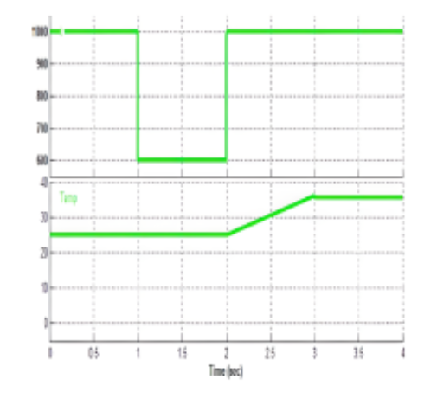


Indian Journal of Science and Technology
Year: 2023, Volume: 16, Issue: 23, Pages: 1760-1767
Original Article
Amel Ourici1*, Bahi Abderaouf2
1Badji Mokhtar University of Annaba, BP 12 Annaba, 23000, Algeria
2Chadli Bendjedid University, El Taref, Algeria
*Corresponding Author
Email: [email protected]
Received Date:30 November 2022, Accepted Date:25 December 2022, Published Date:17 January 2023
Objectives: This study seeks to assess the efficacy of an approach utilizing artificial neural networks for tracking the maximum power point (MPP) in photovoltaic systems. The main objective is to compare this method with the traditional perturb and observe technique, evaluating its effectiveness, particularly when faced with changing weather conditions. Methods: An artificial neural network was employed to model the relationship between the weather conditions such as irradiation and temperature and the maximum power point of the 100 Kw photovoltaic system. They collected data from the installation, including performance measurements and corresponding environmental conditions. The artificial neural network was trained using this dataset to accurately estimate and track the MPP. In our study we have only one input variable which is the power of the photo voltaic generator and a single output which is the cyclic ratio’ D’, we collected these data from the solar panel simulation with perturb and observe control. The network we built has an input layer with two neurons, a hidden layer with 15 neurons and an output layer with one neuron, we performed a learning on 100 data using Matlab software, we trained and tested this neural network until we obtained a very small quadratic error compared with similar researches. Compared with a P&O method , the maximum power was riched. Findings: The deep learning model exhibited enhanced efficiency in extracting the maximum power point ;particularly ; in the presence of climatic variations. It successfully captured the complex relationships between weather conditions and the MPP, leading to improved power generation and minimized energy losses. The maximum power reached with perturb and observe method (P&O) is 95 kw for a response time of 0.1752 s, on the other hand the neural method is faster with a response time of 0.1567 s and at the same time the maximum power of 100 kw has been reached. Novelty: This study is unique in a way that it employed an artificial neural network for MPP extraction in photovoltaic installations. The neural network we used to simulate our photocoltaic installation produced excellent results: we can clearly see that the PV output voltage remained constant and PV maximum power reached 100 kw despite climatic variations.
Keywords: Solar Pannel; Maximum Power Tracking; Artificial Neurons; Quadratic Error; Climatic Variations.
© 2023 Ourici & Abderaouf. This is an open-access article distributed under the terms of the Creative Commons Attribution License, which permits unrestricted use, distribution, and reproduction in any medium, provided the original author and source are credited. Published By Indian Society for Education and Environment (iSee)
Subscribe now for latest articles and news.